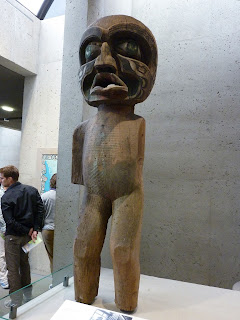Several years ago, when Anne Adams and I were studying how people engaged with health information, we came up with the notion of an "information journey", with three main stages: recognising an information need; gathering information and interpreting that information. The important point (to us) in that work was highlighting the important of interpretation: the dominant view of information seeking at that time was that if people could find information then that was job done. But we found that an important role for clinicians is in helping lay people to interpret clinical information in terms of what it means for that individual – hence our focus on interpretation.
In later studies of lawyers' information work, Simon Attfield and I realised that there were two important elements missing from the information journey as we'd formulated it: information validation and information use. When we looked back at the health data, we didn't see a lot of evidence of validation (it might have been there, but it was largely implicit, and rolled up with interpretation) but – now sensitised to it – we found lots of evidence of information use. Doh! Of course people use the information – e.g. in subsequent health management – but we simply hadn't noticed it because people didn't talk explicitly about it as "using" the information. Extend the model.
Wind forwards to today, and I'm writing a chapter for InteractionDesign.org on semi-structured qualitative studies. Don't hold your breath on this appearing: it's taking longer than I'd expected.
I've (partly) structured it according to the PRETAR framework for planning and conducting studies:
I've tended to lump the details of participant recruitment in with Resources (even though it's really part of the detailed study design), and of informed consent in with Ethics. But what about interventions such as giving people specific tasks to do for a think-aloud study? Or giving people a new device to use? Or planning the details of a semi-structured interview script? Just because a resource is available, that doesn't mean it's automatically going to be used in the study, and all those decisions – which of course get made in designing a study – precede data gathering. I don't think this means a total re-write of the chapter, but a certain amount of cutting and pasting is about to happen ...
In later studies of lawyers' information work, Simon Attfield and I realised that there were two important elements missing from the information journey as we'd formulated it: information validation and information use. When we looked back at the health data, we didn't see a lot of evidence of validation (it might have been there, but it was largely implicit, and rolled up with interpretation) but – now sensitised to it – we found lots of evidence of information use. Doh! Of course people use the information – e.g. in subsequent health management – but we simply hadn't noticed it because people didn't talk explicitly about it as "using" the information. Extend the model.
Wind forwards to today, and I'm writing a chapter for InteractionDesign.org on semi-structured qualitative studies. Don't hold your breath on this appearing: it's taking longer than I'd expected.
I've (partly) structured it according to the PRETAR framework for planning and conducting studies:
- what's the Purpose of the study?
- what Resources are available?
- what Ethical considerations need to be taken into account?
- what Techniques for data gathering?
- how to Analyse data?
- how to Report results?
I've tended to lump the details of participant recruitment in with Resources (even though it's really part of the detailed study design), and of informed consent in with Ethics. But what about interventions such as giving people specific tasks to do for a think-aloud study? Or giving people a new device to use? Or planning the details of a semi-structured interview script? Just because a resource is available, that doesn't mean it's automatically going to be used in the study, and all those decisions – which of course get made in designing a study – precede data gathering. I don't think this means a total re-write of the chapter, but a certain amount of cutting and pasting is about to happen ...
